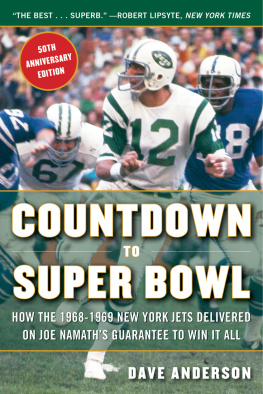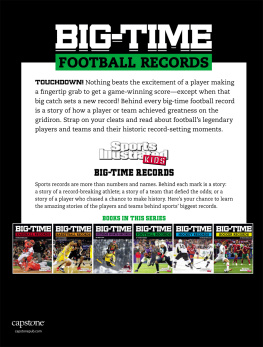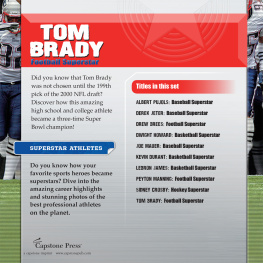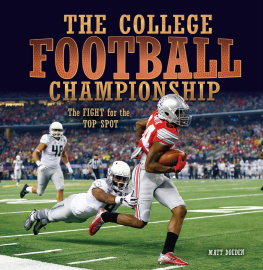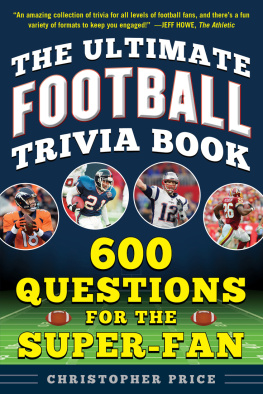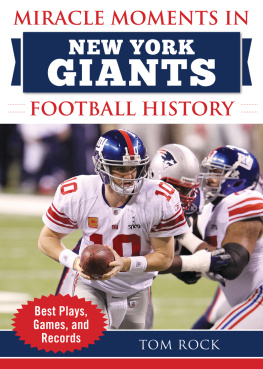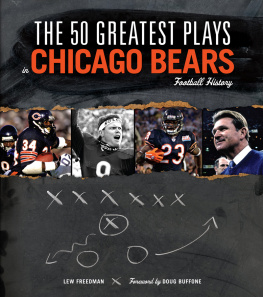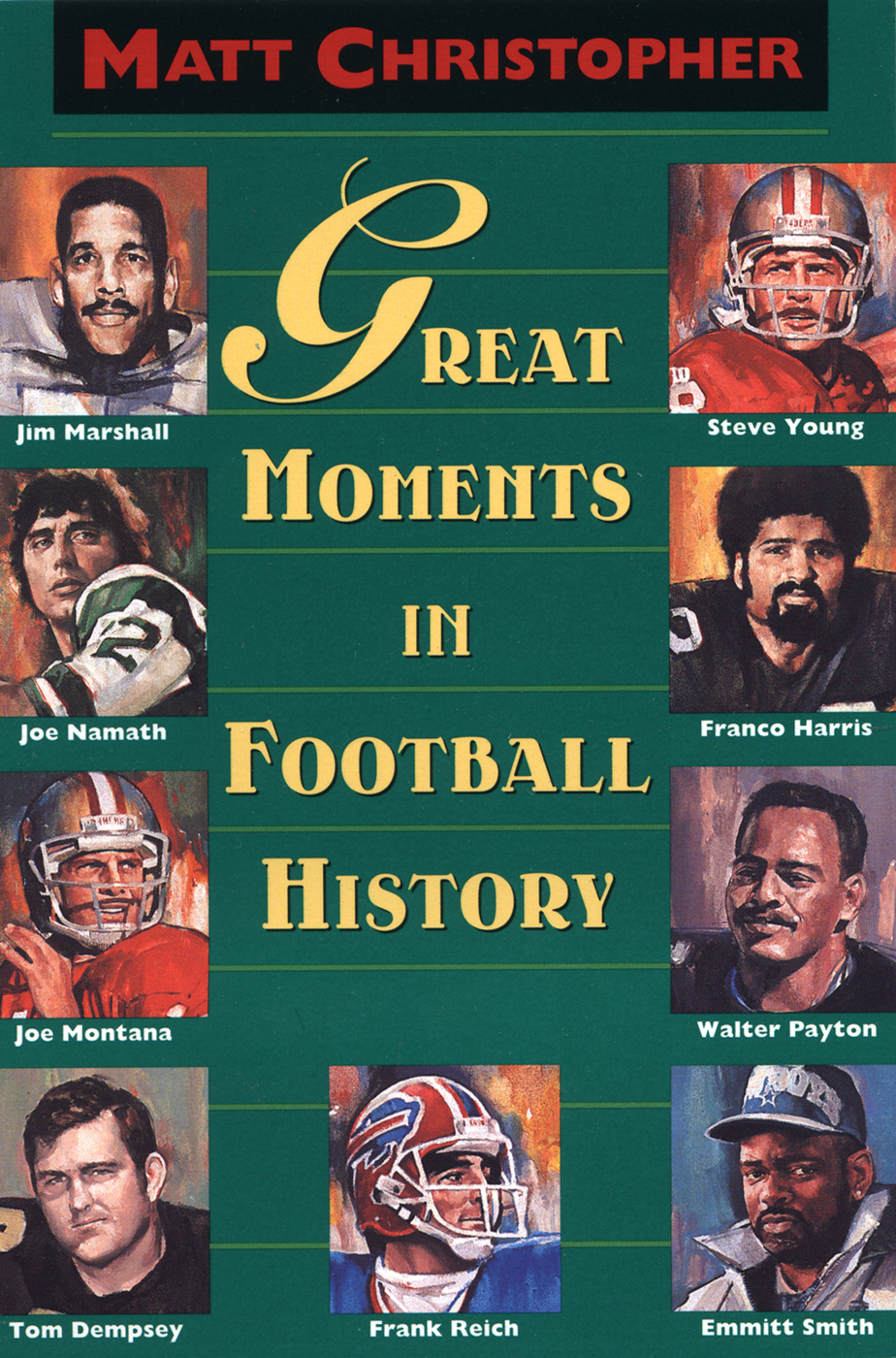Copyright 1997 by Matthew F. Christopher
All rights reserved. In accordance with the U.S. Copyright Act of 1976, the scanning, uploading, and electronic sharing of any part of this book without the permission of the publisher is unlawful piracy and theft of the authors intellectual property. If you would like to use material from the book (other than for review purposes), prior written permission must be obtained by contacting the publisher at permissions@hbgusa.com. Thank you for your support of the authors rights.
Little, Brown and Company is a division of Hachette Book Group, Inc.
The Little, Brown name and logo are trademarks of Hachette Book Group, Inc.
The publisher is not responsible for websites (or their content) that are not owned by the publisher.

JIM MARSHALL
Only One Game
Have you ever done something so embarrassing you just wanted to disappear? It happens to everybody, even professional football players.
Defensive end Jim Marshall was one of the greatest players of all time. He entered the NFL in 1960 after earning All-American honors at Ohio State.
After playing one season with the Cleveland Browns, he joined the Minnesota Vikings in 1961. For the next nineteen years, through 1979, he anchored the Vikings defensive line. During his time with the club, the Vikings earned a well-deserved reputation as one of the toughest defensive teams ever.
From the mid-1960s through the early 1970s, Marshall teamed with end Carl Eller and tackles Gary Larsen and Alan Page to form a legendary defensive front nicknamed the Purple People Eaters for their bright purple jerseys and their ability to sack quarterbacks.
Over the course of his career, Marshall helped lead the Vikings to four Super Bowl appearances and was an annual selection to the Pro Bowl. If the dictionary needed a picture next to the entry defensive end, Jim Marshall would be the top choice.
When Marshall finally retired after the 1979 season, he held a host of NFL records. In his twenty-year career, he played every game of every season, a record 282 consecutive games, including 270 with the same team, the Vikings. Including post-season play, he played in 302 consecutive games.
The closest Marshall ever came to missing a game was when he was hospitalized for nearly two weeks with bronchitis. But he checked out twice to play football. In 1995, Sports Illustrated selected Marshalls consecutive game total as the NFL record least likely to ever be broken.
Another of his NFL records that still stands is his twenty-nine total career fumble recoveries. But Marshall might be happier if that number stood at twenty-eight. One of those recoveries in one of those 282 games was the most embarrassing moment in NFL history.
On October 25, 1964, the Vikings traveled to San Francisco to play the 49ers. Had it not been for Jim Marshall, no one would remember the game today. Neither team made the playoffs that season, and the game had little impact on how either team finished in the standings.
Midway through the first half, the 49ers were pinned down deep in their own territory. At the ten-yard line, San Francisco quarterback George Mira crouched behind the center and barked out the signals.
Jim Marshall crouched on the right side of the line. If the 49ers ran the ball, Marshall was supposed to hold his position. If they passed, he would try to sack Mira.
The ball was snapped. Mira quickly dropped back into the pocket at the three-yard line and looked downfield. He wanted to pass.
The left side of Minnesotas line pushed forward, forcing Mira to step up in the pocket and then move to his right. On the opposite side of the field, Jim Marshall was sandwiched in a double-team block. He was out of the play.
For a moment, it looked as if Mira would scramble. Then he spotted running back Billy Kilmer open in the middle of the field. Mira threw.
Kilmer (who later injured his legs and switched to quarterback) caught the ball at the twenty-seven and turned to run upfield. He was surrounded by Vikings.
First one player, then another, and finally a third took shots at Kilmer as he spun and twisted at the 30-yard line, trying to get away. As Kilmer struggled to stay on his feet, Jim Marshall headed upfield.
Marshall was unique among defensive linemen at the time. At six-foot-three and nearly 250 pounds, he wasnt just big and strong. He was also fast. Even though he was twenty yards away from the play, he took off upfield in pursuit of the ball. Few other players would have even bothered.
Kilmers dance gave Marshall time to catch up. As Marshall crossed the 25-yard line, Kilmer, still trying to spin loose, dropped the football.
Marshalls extra effort was about to pay off. As the ball bounced free downfield, he charged in at full speed. He picked the ball up off the ground at the 34-yard line in full stride. Ahead of him, he saw nothing but open space.
It was every defensive linemans dream. Marshall tucked the ball under his arm and took off.
Only it wasnt a dream. It was a nightmare.
Jim Marshall was running the wrong way!
Somehow, hed gotten confused. When hed snagged the ball and seen the open field ahead, hed forgotten where the line of scrimmage was.
As he reached midfield, the only players chasing him were a few other Vikings, who were hoping to catch up and turn him around. But the 49ers and most of the Minnesota players just stood on the field, dumbfounded. They had never seen a player run the wrong way before.
As he rumbled on, Marshall turned and looked back over his shoulder several times. All he saw were his own teammates, who he assumed were running after him to congratulate him after he scored.
Marshalls long legs ate up the yardage in huge chunks. No one was going to catch him.
When he crossed the goal line into the end zone, he grabbed the ball in his huge right hand and flipped it underhanded toward the crowd in celebration. Then he turned back to accept the congratulations of his teammates.
They were not smiling.
Then Marshall looked at the referee. Instead of holding his hands parallel over his head, signaling a touchdown, the referee held his arms over his head and placed his palms together, the signal for a safety.
Safety? thought Marshall.
Then it hit him. He realized what he had done. He had run the wrong way and crossed the wrong goal line. When he threw the ball into the crowd, he had effectively downed the football, giving the 49ers two points.
He held his head between his hands and looked for an escape hatch on the field. He wanted to crawl out of sight, fast.
The crowd roared and laughed at the 49ers good fortune.
But there was nowhere for Marshall to go. After the safety, the Vikings had to kick off to the 49ers. Jim Marshall had to go right on playing.
He felt terrible, but there was nothing he could do about it now. His teammates tried to make him feel better. They knew he was a good player and hadnt made the mistake on purpose.
Marshall took full blame and promised himself to play the rest of the game as best as he could. He wasnt going to let one mistake ruin his career.
In the second half, Marshall went on to play what he later considered to be the greatest half of football of his life. He was everywhere, hounding George Mira behind the line, stuffing the run, and even going downfield again to tackle receivers. Then, late in the game, with the Vikings trailing 22-20, the two-point spread due to Marshalls safety, he got another chance.


